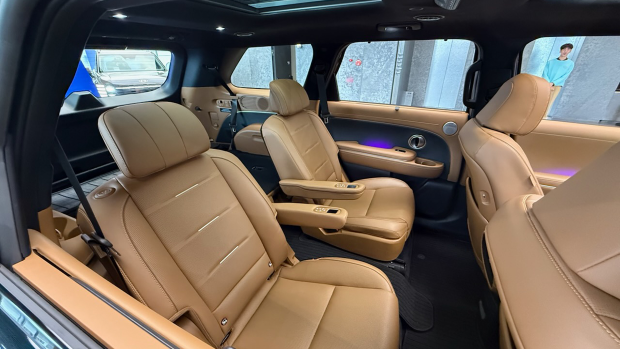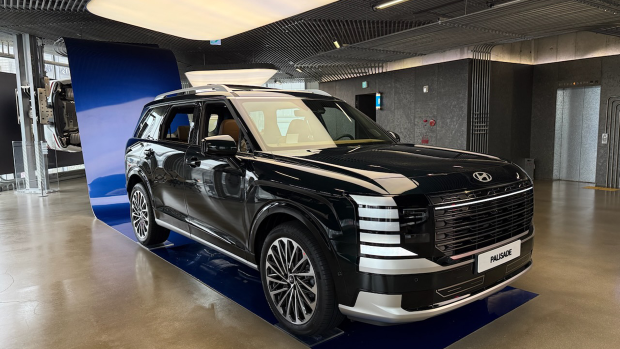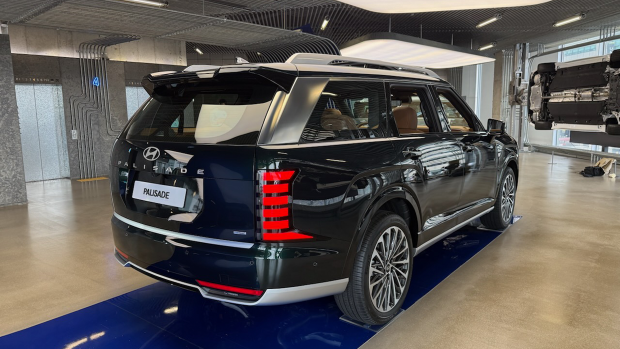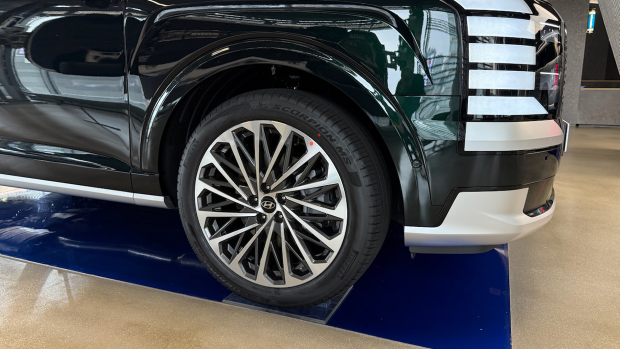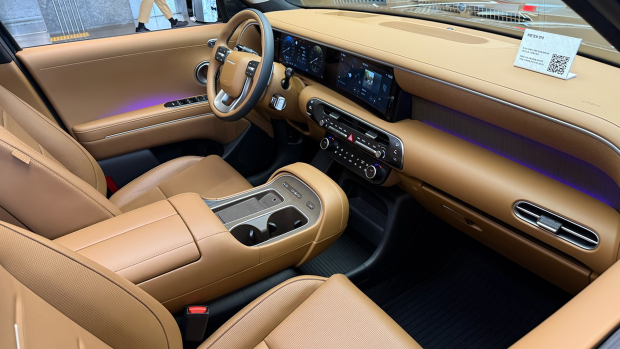-
Car Reviews
- All reviews
- Midsize SUVs
- Small cars
- Utes
- Small SUVs
- Large SUVs
- Large cars
- Sports SUVs
- Sports cars
- Vans
Latest reviews
- Car News
-
Car Comparisons
Latest comparisons
- Chasing Deals
Current Palisade’s petrol FWD/diesel AWD mix to be dropped in favour of all-wheel drive hybrid with enlarged dimensions
The second-generation Hyundai Palisade will be released in Australia in the fourth quarter of 2025—and probably closer to October than December 2025 if production of the new large SUV proceeds according to Hyundai Motor Company Australia (HMCA) planning.
But beneath the new Palisade’s more elegant and squared-off styling (that evokes first-gen Range Rover Sport to our eyes) sits a massive change that buyers will need to get used to. Despite 89 percent of Australian customers opting for the current Palisade diesel, the fuel type will be controversially dropped when the new model lands.
In a move that echoes a similar change to the slightly smaller Hyundai Santa Fe, the decision to drop diesel is part of HMCA’s transition from pure combustion products to a range of hybrid and electric vehicles. Diesel is not even available in the Palisade’s home market of South Korea where oilers also remain very popular.
In fact, when the longer (5060mm vs 4995mm), wider (1980mm vs 1975mm) and taller (1805mm vs 1750mm) second-gen Palisade arrives in Australian dealerships, it will be a hybrid-only proposition. The petrol-electric launch engine has been locked in but HMCA is still evaluating whether it needs to bring a pure-petrol option to Australia.
That’s because owners of the diesel Palisade—which uses a 2.2-litre turbo ‘four to produce 147kW/440Nm—are expected to find the six-speed and all-wheel drive hybrid’s combination of electrically-assisted grunt and decent real-world fuel economy attractive.
The new Palisade scores Hyundai’s latest-generation hybrid system, which teams a 2.5-litre turbo petrol four-cylinder with two front-mounted electric motors. System power is a considerable 245kW: the 2.5T engine makes 193kW/353Nm while the electric motors contribute 54kW/264Nm.
That makes the incoming Palisade hybrid about 40 percent more powerful than the new Santa Fe hybrid, which utilises a smaller 1.6-litre turbo petrol engine and sole electric motor to generate 172kW combined.
A non-hybrid version of the 2.5-litre turbo petrol engine is available in the South Korean market, and HMCA is evaluating the 213kW powertrain in a move that could mirror the launch of the latest Santa Fe locally—where the hybrid was the sole launch engine but a cheaper non-hybrid joined the range within months.
South Korean customers are already able to purchase the new Palisade, which jumped in price by around 10 percent over the outgoing version (comparing the old V6 petrol to the new non-hybrid turbo ‘four).
Australian buyers might be in for sticker shock if the new Palisade arrives without the cost-leading non-hybrid petrol, however, as the hybrid system is more ‘premium’ than either the current V6 petrol (from $66,800 before on-road costs) or diesel ($70,800 BOCS).
Either way, a price increase for the new Palisade is guaranteed—but Chasing Cars understands that HMCA is working on minimising the scale and that a relatively small jump is currently envisioned.
At least two trim grades will come to Australia. Up to four Palisade variants have been offered simultaneously in first-generation guise but the range was recently trimmed to previously mid-tier Elite, and top-tier Calligraphy, offers locally.
Calligraphy versions of the next-gen Palisade creep closer to Genesis levels of luxury than ever before, offering higher-end leather, wood and suede trims, relaxation front seats with 18 ways of adjustment for the driver, a 14-speaker Bose stereo, and a UV smartphone sanitiser.
Infotainment will be taken care of by dual 12.3-inch screens with standard-fit wireless Apple CarPlay and wireless Android Auto while modern connectivity, a smartphone app and fingerprint sensing are all expected.
Latest news
About Chasing cars
Chasing Cars reviews are 100% independent.
Because we are powered by Budget Direct Insurance, we don’t receive advertising or sales revenue from car manufacturers.
We’re truly independent – giving you Australia’s best car reviews.
